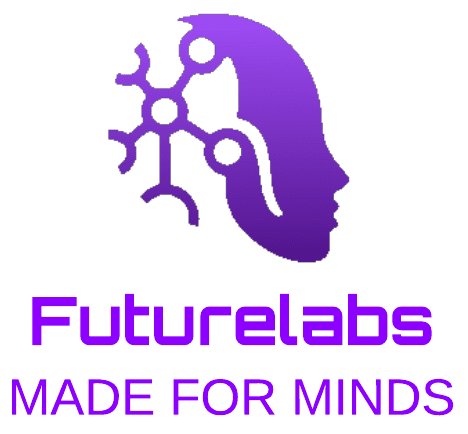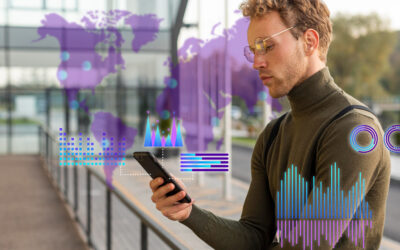Twelve Technological Trends for 2025: The Beginning of the Era of Convergence
Singular advancements are being integrated into complex developments that will redefine the digital world we know in the coming years
A new era begins. The most promising technological developments, such as neural networks and subsequent generative artificial intelligence (AI), quantum computing, supercomputers, robotics, and the digitalization of the physical world, had until now remained in more or less isolated sectors, each following its own roadmap. But the time has come for these advancements to converge into broad ecosystems. “In the next five years, we will see the convergence of all scaling technologies,” warns Stephen Ibaraki, founder of AI For Good. AI is no longer a singular protagonist but now a supporting actor in the new film.
Rev Lebaredian, Vice President of Omniverse and Simulation Technology at tech giant Nvidia, believes one of the goals of this convergence will be humanoid robots, which he considers “the next big leap for humanity” thanks to AI based on large language models, which provide the missing brain to the machine. Roberto Romero, creative technologist at Accenture Song, having previously worked at companies like Oculus, Sony, and HTC, believes the manifestation of this technological union will be the metaverse, “the future internet,” as he defines it. This digital space will combine the virtual and the physical, with real and dynamic relationships, interconnected to all devices, with real economic and social capabilities and a user with a digital identity. These will be the advancements that usher in the new era this year:
Cybersecurity
The street is no longer the main venue for crime. Over 25% of crimes are now committed online, ranging from kidnappings and extortion to sexual violence. All cybersecurity companies agree that next year will see continued growth in cybercrime.
Nataly Kremer, product director at Check Point Software, predicts an “exponential increase in the sophistication of cyberattacks” that will require the adoption of advanced technologies to counter them. According to Check Point Research, cyberattacks globally increased by 75% in the third quarter of 2024, driven by AI.
“Threats will not be limited to ransomware [data and systems hijacking followed by extortion]. The rise of the Internet of Things (IoT), with 32 billion devices expected by 2025, according to Morefield, will expand the attack surface,” Kremer warns.
The cybersecurity expert views AI as “a double-edged sword, as it will enhance both attacks and defenses.” For cybercriminals, AI facilitates the design of more precise and effective threats for large-scale operations with fewer resources. But for security operation centers (SOCs), this tool helps “prioritize risks, reduce false positives, and detect anomalous patterns more quickly.”
Connectivity and Mobile
“An exciting future is expected, as communication service providers prepare for a transformation of the mobile industry,” says Fredrik Jejdling, Vice President and Head of Networks at Ericsson, in the Mobility Report. “The innovation journey has already begun,” he adds. This refers to the widespread adoption of 5G networks, which, globally, excluding China, only cover 30%. “But the growing use of generative AI in mobile devices, enabling hyperpersonalized content creation at scale, could affect the volume and characteristics of mobile data traffic in the future,” he explains.
And after 5G, the next generation of connectivity, 6G, is emerging, which will open the door to the metaverse. “6G capabilities will make the vision of freely moving in the cyber-physical world a reality, building a critical bridge between the sensory world, actions, and experiences and the programmable digital representation of the physical world,” Jejdling highlights.
New Reality
The cyber-physical world includes augmented reality and virtual reality, as well as digital twins. It will be possible to project digital objects onto physical ones and create a mixed reality. This advancement will enable holographic calls, where a person is digitally represented within a physical environment, with countless sensors integrated into this to update and ensure the real-time digital representation. Ibaraki highlights the latest Meta glasses. They may seem like just another device, but freeing the developments of new digital realities from isolating, wired glasses to make them a common accessory is a qualitative leap.
Artificial Intelligence and Agents
AI will be integrated into all devices, not just mobile phones and computers. It aspires to become an agent, a permanent assistant, a platform capable of conversing like a human, analyzing documents (texts, images, or videos) in various domains, providing complex answers and solutions, and executing them on behalf of the user. According to Sam Altman, CEO of OpenAI: “A competent colleague who knows absolutely everything about my life, every email, every conversation I’ve had, and will be present in all actions.” However, the anticipated boom in its use did not happen this year, and companies are hopeful that its takeoff will come next.
Data and Internet of Things
Mobile network data traffic grew by 21% last year, averaging 157 exabytes (157,000 billion gigabytes) per month. The primary driver is video content consumption, which accounts for 74% of the traffic. Technology is struggling to maintain traffic capacity and seeks ways to do it more sustainably. The entertainment industry will be joined by connected devices, which fall under the common term of the Internet of Things; they already account for 7% of the traffic and will continue to grow.
Drones
Drones are no longer limited to small quadcopters with batteries that offered little range. They are now crucial for surveillance, search and rescue operations, warfare, or emergency material delivery. Technological advances, sensors, and falling prices predict a new boom in these devices, despite the failure of their use as delivery tools, which are still in pilot projects.
Jay Stanley, an analyst at the American Civil Liberties Union (ACLU), warns MIT Technology Review: “If there is a buildup of different uses of this technology, we’re going to end up in a world where, from the moment you leave your house, you’ll feel as if you’re constantly under surveillance from the sky. It may have some real benefits, but it urgently needs strong checks and balances.”
Chips
The heart of all these advancements lies in semiconductor materials containing multiple integrated circuits. The use of AI has skyrocketed its demand and the need for new capabilities. Governments, tech giants, and startups are competing for a prime spot in this industry. TSMC and Intel, two of the largest chip manufacturers in the world, are building enormous plants with direct and financial aid from the U.S. government, surpassing $26 billion. Japan is investing $13 billion; India, $15 billion; and Europe, over $47 billion to try to achieve sovereignty in a market dominated by China. The goal in new developments is to gain power while increasing energy efficiency.
Companies like Amazon, Microsoft, and Google have been developing their own semiconductors for years to avoid reliance on foreign companies or Nvidia, a giant that holds a large share of the market for the most advanced AI training chips, and has a value greater than the GDP of 183 countries.
Images, Deepfakes, and Disinformation
At the end of 2022, the first models that could turn text into video appeared. Companies like Meta, Google, and video-tech startup Runway presented results that didn’t seem significant. A year and a half later, OpenAI presented Sora, followed by Google, Runway, Midjourney, and Stability AI, among others. Today, they are capable of creating entire movies.
However, the creative abilities of these tools have been tainted by their widespread use for creating deepfakes—images that look real but are fake—flooding the internet with propaganda and non-consensual pornography. This issue, which has become a global problem, will continue to grow this year. After all, video is the most natural medium on the internet, with platforms like YouTube and TikTok leading the way.
Moreover, online disinformation will remain one of the biggest social threats and to democratic systems. “We are replacing trust with distrust, confusion, fear, and hate. A society without grounded truth will degenerate,” says Michal Pechoucek, executive at Gen Digital, the company behind online security brands like Norton and Avast.
John Wissinger, who leads innovation and strategy teams at Blackbird AI, tracks low-tech disinformation, such as social media posts showing real images out of context. “Generative technologies make things worse, but the issue of people deceiving others, whether deliberately or not, is not new,” he says. Blackbird has developed Compass, a tool to verify articles and social media posts. MIT and Cornell University researchers have launched a chatbot trained specifically to combat conspiracy theories and hoaxes (Debunkbot.com).
Driverless Cars
Despite incidents and regulation, driverless car projects continue to progress. Manuel Carranza García, professor and PhD at the Department of Computer Languages and Systems at the University of Seville, defends that “its advantages are so evident that it’s almost impossible to give it up.” “In China, it’s already in circulation. Right now, it seems to be more of a legislative program than a technological one. Developments are already there; it will have failures, just like we humans do, and that’s also a legislative issue. But the risks associated with autonomous driving are much lower than the advantages,” Carranza explains.
Robots
The race for this technology is in the hands of about twenty companies, such as 1X Technologies (backed by OpenAI), Apptronik, Agility Robotics, Figure (backed by Jeff Bezos, OpenAI, and Nvidia), and Boston Dynamics, among others. Rev Lebaredian argues that the mechanical aspect of humanoid robots is practically solved and that the market will drive down their cost, just as has happened with other devices. “Now we have the technology to build these physical robots and reduce their price to just a few thousand dollars,” he explains. What was missing emerged a decade ago, when programming, in his words, “stopped generating tools to create skills and intelligence.” “It’s a new revolution,” he warns. Lerrel Pinto’s team at New York University is developing techniques that allow robots to learn through trial and error, obtaining their own training data as they progress.
Classical and Quantum Supercomputing
One of the rising developments that showcases the convergence of technologies is the proliferation of digital twins. Creating, testing, and modifying a future physical reality without prototyping it is key in any industry or in modeling complex systems. The largest of these, Mare Nostrum at the Barcelona Supercomputing Center, is focused on creating a twin of Earth to understand it and prevent catastrophes. Another machine with unimaginable capabilities is Frontier, from Oak Ridge National Laboratory, which is used to develop a digital Milky Way. “If everyone on Earth made one calculation per second, it would take four years to match what that computer can do in one second,” explains Jack Dongarra, a computer scientist at the University of Tennessee.
But understanding complex phenomena in nature, such as the chaotic movement of fluids or the mapping of neurons, these giants will need the help of another promising technology that is beginning to show signs of consolidation: quantum computing. Microsoft, IBM, and Google will present computers and developments next year that represent firm steps toward quantum processing with a sufficient number of qubits, greater lifespan, and fault tolerance—essential for completing the development of large classical machines.
Batteries
The path that begins next year, with a focus on massive electrification, requires many more, better, and cheaper batteries. Lithium-ion batteries, a decades-old technology used in laptops, mobile phones, vehicles, and storage, must make way for more capable, faster-charging, and lower-cost systems. Research in the coming year will focus on alternatives such as solid-state, sodium-ion, and iron-air batteries.






0 Comments